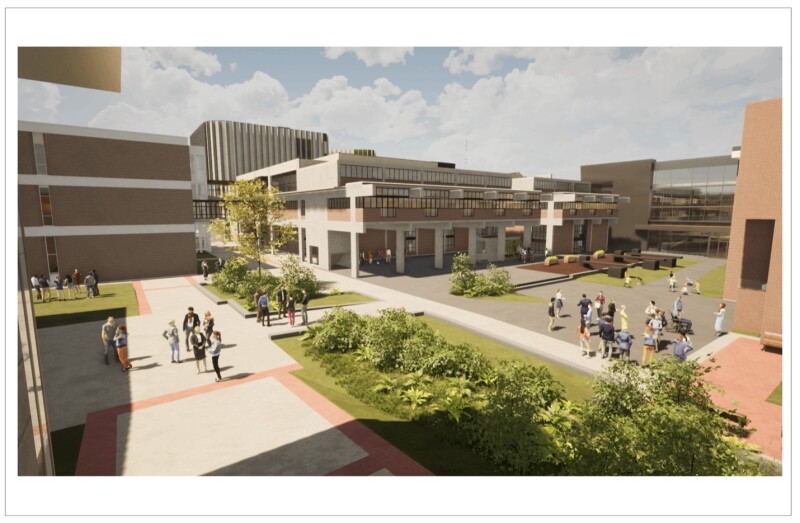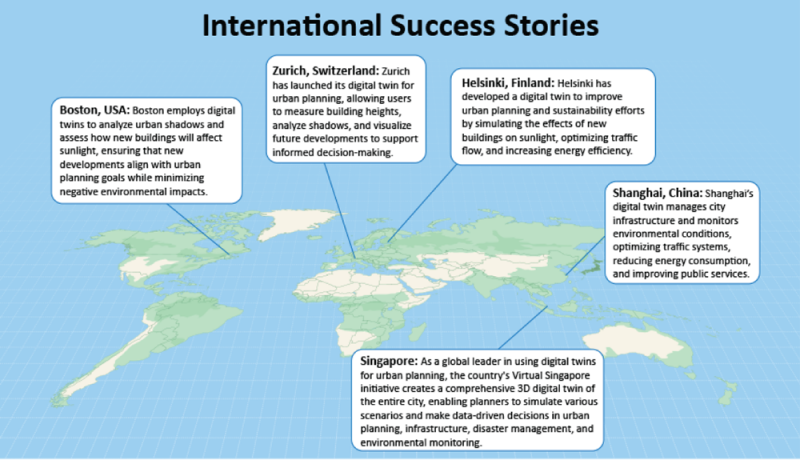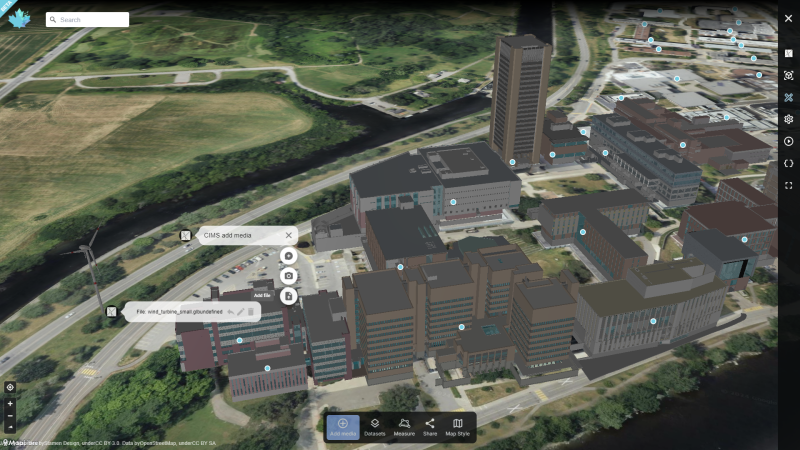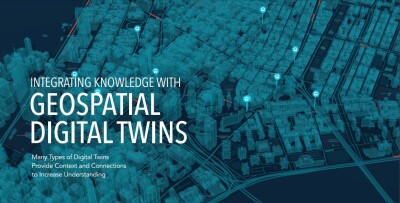As Canada faces rapid population growth and urban expansion, the demand for innovative solutions in urban planning and infrastructure management is becoming increasingly urgent. Aging infrastructure, coupled with the escalating impacts of climate change and extreme weather, intensifies the need for effective, data-driven decision-making.
Digital twin technology – a virtual representation of physical assets – offers a transformative approach to addressing these challenges. However, despite its significant potential, Canada’s adoption of digital twins in the built environment is still in its early stages compared to other developed nations.
Current State of Adoption
While digital twin adoption is not yet widespread in Canada, its sporadic adoption is evident in some sectors.
- Infrastructure and Urban Planning: Digital twins are being used to improve urban planning and infrastructure management, enabling better decision-making through data analysis and simulation, and enhancing efficiency in complex projects.
- Smart City Initiatives: Digital twins are being incorporated in various smart city initiatives for optimizing energy consumption, improving traffic management, and enhancing public services through real-time data integration and advanced analytics.
- Construction Industry: Though adoption is still limited, the technology is starting to improve building design, streamline construction processes, and enhance asset management. Digital twins offer benefits like lifecycle energy optimization, predictive maintenance, and greater user adaptability.
Notable Canadian Initiatives
The Carleton Immersive Media Studio (CIMS) at Carleton University is researching and prototyping an open-source digital twin platform for Canada. “We argue that data should be easily accessible to all project stakeholders, regardless of their access to licensed software, says Nicolas Arellano, Team Lead at Carleton Immersive Media Studio, Carleton University.
To achieve this, the platform being developed allows users to integrate multiscale and multidisciplinary datasets into a single model via a web browser, eliminating the need for additional software. Accessible online from any internet-connected device, the platform supports the upload of BIM, GIS, and various media types. It also integrates near real-time and open datasets from sources such as federal agencies (e.g., StatsCan, NRCan), provincial platforms (e.g., Open Ontario, BC Data Catalogue), infrastructure providers (e.g., hydro), and urban centers (e.g., Open Ottawa, Données ouvertes - Ville de Montréal).

“We have identified all the required technologies to make it a viable product, but we are still working on improving scalability and maintainability. We plan to have the entire source code and the platform available for free by 2025 beginning,” Arellano adds.
Further, several cities are exploring digital twin technology in urban planning and construction, with projects reflecting a growing interest in using it to tackle infrastructure challenges and build sustainable communities.
- Toronto: Infrastructure Ontario (IO) and Toronto Metropolitan University (TMU) have signed an MOU to collaborate on digital twinning for modernizing Ontario's infrastructure. The agreement allows IO to utilize TMU’s expertise to test innovative solutions, improve infrastructure efficiency, and support better transit and climate resiliency.`
- Vancouver: The city is actively developing a digital twin for urban planning and sustainability.
- YVR International Airport launched its digital twin in 2022, allowing for training, optimization, future planning, and simulation by visualizing data through the integration of sensors, historical, and real-time data.
- The Canada Line (Metro Vancouver), part of TransLink’s SkyTrain network in Metro Vancouver, uses a digital twin to optimize operations and maintenance.
- YVR International Airport launched its digital twin in 2022, allowing for training, optimization, future planning, and simulation by visualizing data through the integration of sensors, historical, and real-time data.
- Montreal: The city is implementing a smart city initiative to increase access to food and improve mobility using digital twin technology. Earlier, Montreal won C$50 million in Infrastructure Canada's first Smart Cities Challenge for its innovative proposal. Long-term goals include fostering community engagement and leveraging Montreal's innovation ecosystem to address urban challenges.
- Calgary: The city has been engaging with smart city technologies, including digital twins, to improve infrastructure management and urban planning. Calgary’s digital strategy aims to enhance access to city services by using digital platforms for better communication and engagement between city departments, citizens, and other levels of government. The project involves mapping roadways, transportation, utilities, and more, with plans to incorporate additional data sources and sensors.
Among other notable initiatives, the Sidewalk Labs project in Toronto aimed to create a smart city neighborhood with advanced technologies, including digital twins, but was cancelled in May 2020 due to regulatory and privacy concerns. Its cancellation underscores the regulatory gaps and uncertainties hindering the adoption of digital technologies in urban development.

Key Challenges Facing Digital Twin Implementation in Canada
A recent survey by KPMG and the Canadian Construction Association revealed that only 25% of construction firms view themselves as competitive in technological advancements, with just 23% leveraging data-driven decision-making. Although cloud technologies have seen widespread adoption, digital twins and other advanced technologies are still not fully utilized. Several challenges must be tackled to facilitate their broader adoption.
High Initial Costs and Accessibility: A major barrier to adoption of digital twins is the high initial investment required for software, hardware, and training, particularly for smaller municipalities with limited budgets. Stakeholders can start with scalable digital twins, implementing essential functionalities in a few cities initially. This phased approach allows for gradual expansion, spreading costs over time and demonstrating value before full-scale adoption.
Return on Investment (ROI) Uncertainty: The KPMG-CCA survey revealed that many construction firms lack motivation to invest in technology, as current procurement practices shift much of the project risk and associated costs onto contractors. Demonstrating clear, tangible benefits and cost savings is essential to encourage wider adoption. For instance, Virtual Singapore significantly enhances energy efficiency in urban planning while in Helsinki, digital twin technology has helped streamline project timelines and improved resource allocation.
Regulatory and Policy Barriers: Evolving regulatory environment and compliance requirements can delay the adoption process. Gaining support from all relevant stakeholders, particularly government entities, is crucial. “Effective communication and demonstration of digital twins' tangible benefits can help secure buy-in from stakeholders,” says Arash Shahi, CEO, LandLogic. Pilot projects and clear examples of how the technology can address specific challenges can persuade stakeholders of its value.
Lack of Collaboration: A significant challenge in the digital transformation of the construction industry is the lack of collaboration among stakeholders – government, private sector, and academia. Karina Delcourt, Strategic Initiatives Manager at ETRO Construction, warns that a lack of collaboration among all parties will stagnate digital workflows, reducing their value to the private sector and hindering the adoption of digital tools. “With government support, academia can continue pushing us towards better and better solutions. This will also lower the risk to the private sector,” she adds.
Data Privacy and Security: Digital twins rely on vast amounts of data to create accurate models and simulations, raising concerns about data privacy and security. “Ensuring data privacy and security is crucial, especially with sensitive information. Using secure data management systems, like those provided by major platforms (e.g., Azure) with advanced security features, can protect data integrity and confidentiality. This helps address privacy concerns and builds trust,” says Shahi.
Integration and Standardization: Integrating digital twins with existing urban planning tools presents challenges, requiring compatibility with current systems and collaboration among stakeholders. A standardized approach is essential for generating comprehensive insights from diverse data sources. “Each stakeholder or group of stakeholders can’t afford to be doing their own thing and needs to follow a standard approach so that all groups can take advantage of what digital twins have to offer,” stresses Shahi.
Arellano points out that Canada hosts various open data galleries, but their integration faces challenges, including the need for GIS training, siloed data portals that limit comparative analysis, and the absence of a national framework for organizing and publishing datasets.

Technical Complexity and Expertise: Shortage of professionals with the expertise needed to develop, implement, and manage digital twins can slow down the adoption process. As Victor M. Lima, Director of Digital Practice at Diamond Schmitt, emphasizes, users resistant to the change are concerned to fall behind as they do not have enough knowledge of new technologies. “A great way to support them on this transition is to provide robust training to their workflows. Small to mid-size companies might have a hard time justifying the cost associated with the training and support, but governments could consider providing tax incentives,” he adds.
Corruption and Accountability: Corruption in the construction industry, notably in Quebec, has been a significant obstacle to adoption. The complexity of projects often leads to oversight challenges and a lack of accountability. Quebec has invested heavily in Building Information Modeling (BIM) to track construction progress and improve transparency.
Adaptability and Standards Across a Diverse Landscape
Each Canadian region faces unique challenges due to its climate, geography, and demographic makeup. Digital twins can be customized to meet specific regional needs by considering environmental conditions, such as climate and geography, as well as demographic factors like population density and community characteristics. This enables the design of solutions that address unique challenges, whether it’s developing resilient housing for flood-prone areas or optimizing energy efficiency in urban centers.
For example, northern communities in Canada face extreme weather conditions, limited accessibility, and unique cultural needs. Digital twins can model these communities to optimize building materials, heating systems, and layouts, ensuring comfort and sustainability. Conversely, in densely populated urban centers like Toronto and Montreal, digital twins can simulate urban expansion, helping to create high-density housing that preserves green spaces and maintains livability.
However, construction standards in Canada are currently provincially led, meaning each jurisdiction has its own specifications. Adopting international standards could facilitate more consistent practices.
Canada also lacks a standardized approach to digital twin modeling and interoperability. The National Research Council Canada has identified the necessity for developing standards and best practices to facilitate the widespread adoption of digital twin technology. Earlier this year, the National Standard of Canada (NSC) established new standards for digital twins in built environments. These standards define minimum requirements for the discovery and management of digital twins, emphasizing data acquisition, organization, and location mapping.
Arellano believes that a successful solution requires a blend of top-down and bottom-up strategies, with all levels of government aligning on a shared vision while collaborating closely with community groups, developers, and contractors. “There is no time to let politics, ego, or profit interfere with the creation of affordable housing. Success will only come through a multidisciplinary and collaborative effort,” he emphasizes.
Despite these challenges, there are opportunities for growth and innovation. Collaboration among government, industry, and academia can drive digital twin applications, while specialized training and standardization practices can enhance workforce skills and facilitate broader adoption.
As Canada navigates the challenges, the potential for the digital twins to transform the built environment remains immense, including addressing critical issues like housing shortages and sustainability.






